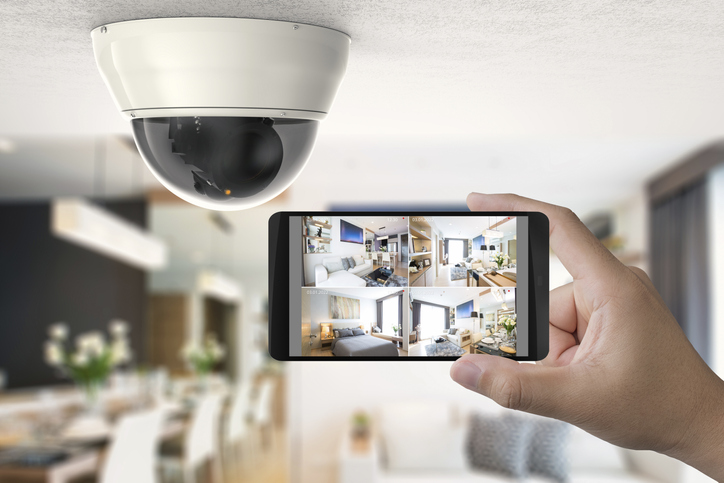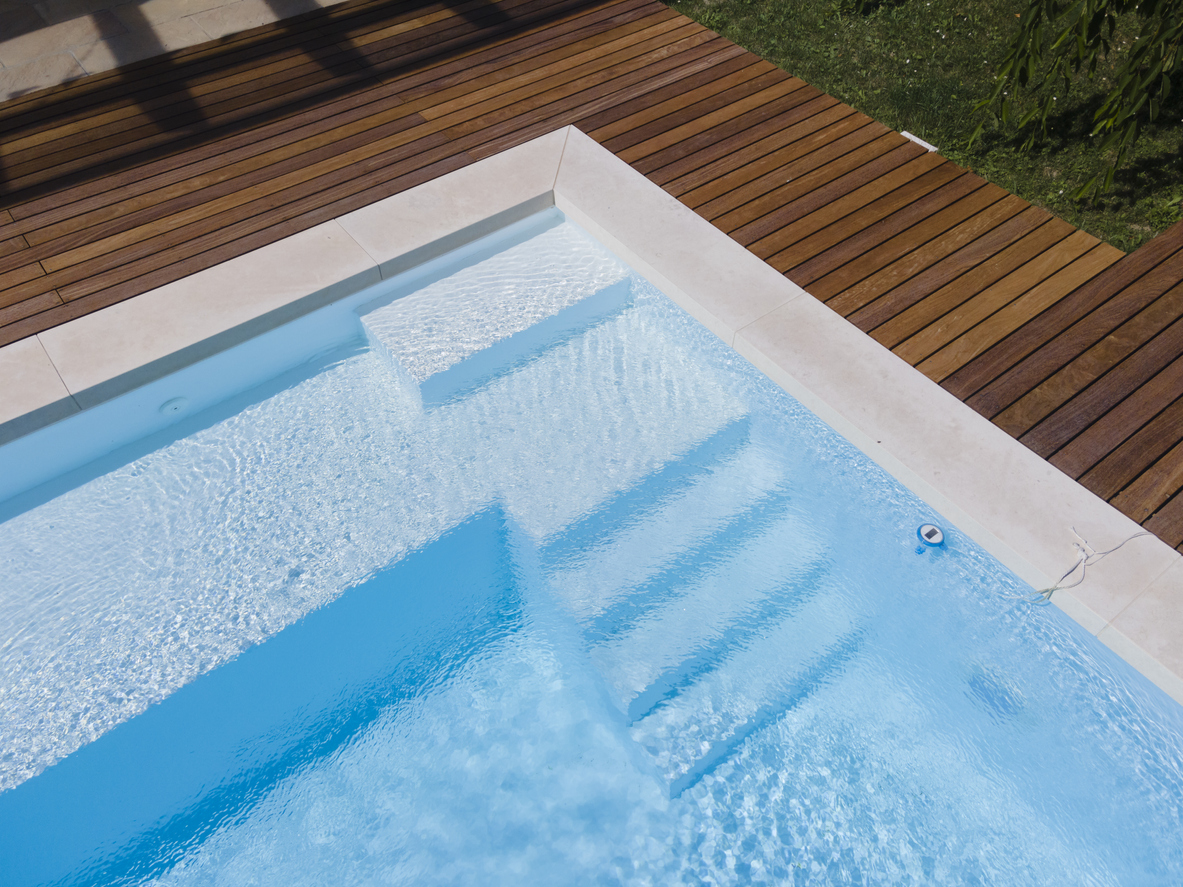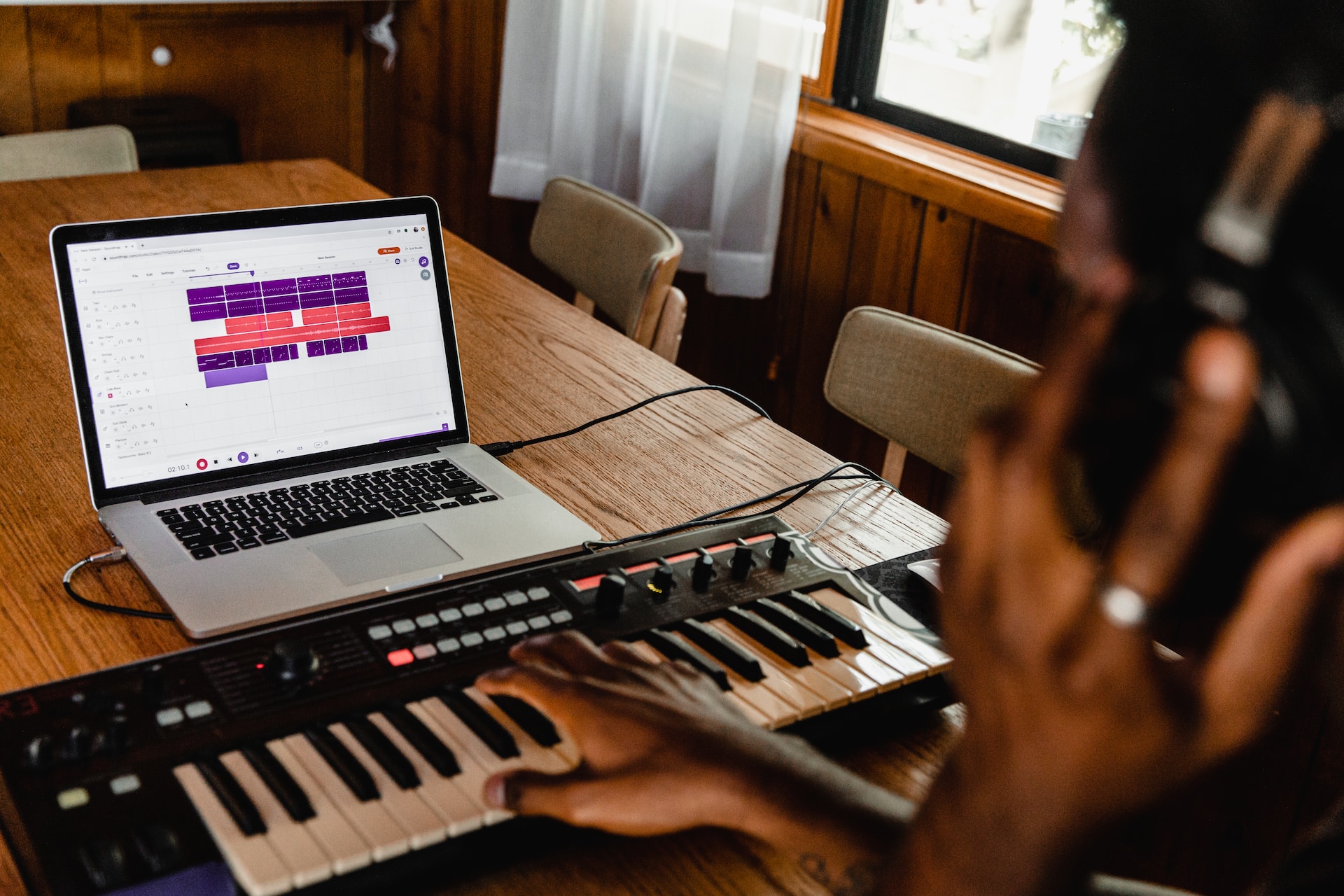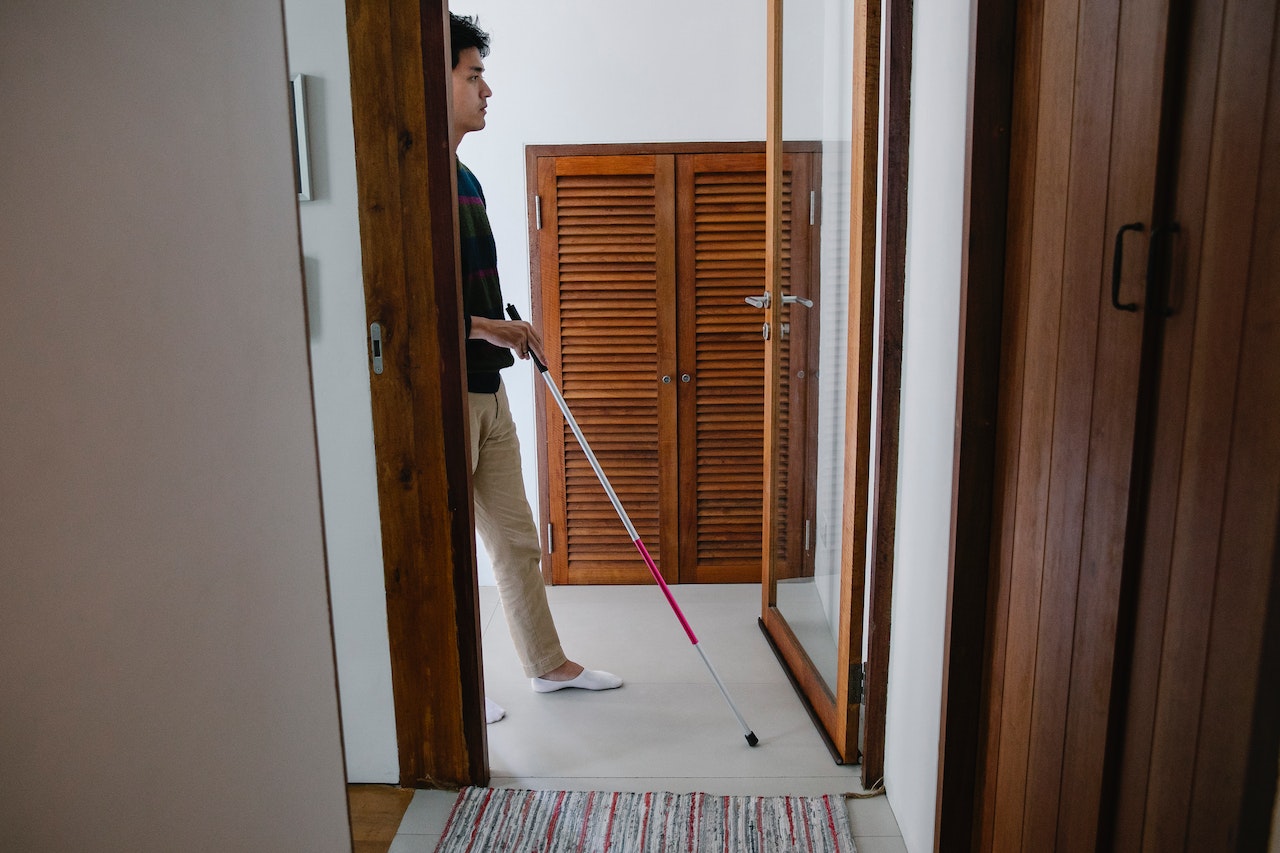Feeling safe at home and knowing that you, your loved ones, and your belongings are protected at all times is an increasing concern due to the high rates of burglaries happening everywhere, which is why it’s essential to choose the right security system for the home and be educated on the topic, to make the best decision when it comes to choosing a home security system that suits your needs, it can be overwhelming to know what to include in your home system, from security lighting to security cams and alarms, there are a ton of smart home security options in the market that are super reliable, but we do not always know what suits our needs best, which is why we asked the experts for their best advice in terms of what is available in the market, how these systems work, and what they recommend to have at home; keep reading to know what they told us.
What should a good home security system include?
A good home security system should have the flexibility to incorporate a range of equipment and services that bring a resident peace of mind at a price point that meets their budget. Living situations vary and what defines security and privacy for one home, may not for another. We are strong advocates of 24/7 professional monitoring, camera solutions with video cloud storage, and systems with cellular backup, but we also want to empower our customers to self-monitor and exclude video products if they deem it appropriate for their homes. In short, a good home security system is flexible.
Dan Roberts | Scout Alarm
What kind of security features should be included in a smart home system?
When asked about security in a smart home, the first option that often comes to mind is a surveillance system with video and alarms, which is great to have as a stand-alone option. However, this doesn’t take care of important areas of protection besides physical intruders. By this we mean it’s also just as important to prevent the risk of digital intruders invading your data privacy. With Loxone, the control system and technology that operates the security functions is Cloud-free. So sensitive data remains within your walls.
A complete security system is put in place that involves sensors, alarms, automated lights, and motorized blinds along with alerts in the Loxone App. There are two instances that will trigger an alarm sequence. 1.) detection of unwanted presence i.e burglar or 2. Detection of potential hazard i.e water leak.
Starting with burglary protection, a range of sensors are the first components involved. For example, when you leave your home and the system is “armed”, the strategically placed sensors will know if someone is there and will then trigger an alarm. The loud alarm will play through speakers while, at the same time, lights begin flashing and motorized blinds will fully open. The Loxone App will deliver a push notification to a smartphone, with the option to disarm.
To further support this level of defense, there is an Intercom and NFC Code Touch keypad that can be placed at the entryway that can be monitored and accessed in the Loxone App. This way, only guests with granted access rights via unique code or a key fob can get inside. If not, any visitor can ring in on the video intercom and you will instantly receive an image of the visitor, with the option to communicate.
Next, in addition to unwanted intruders, the system also detects unwanted hazards such as water leaks. Water sensors can be placed under a sink or dishwasher, for example, so once water becomes in contact with the device, the same alarms and notifications will occur as if it was an intruder. So in any potential danger, you are always warned immediately and can take action before it’s too late.
Courtney Muraczewski | Loxone
What is the best way to make sure your home is safe when you will be away for a while?
One of the best ways to ensure your home is safe today is by installing DIY home security cameras that are easy to use, affordable, and secure. Look for security cameras that include features that allow your readers to always be in the know, wherever they are. For instance, Canary sends alerts directly to their phone when there’s motion detected. In addition, Canary offers other features such as 24/7 watch live, two-way talk (which enables you to have real-time conversations through the Canary app with anyone at home), a siren that can deter intruders, motion-active recordings, and so much more.
Canary believes home security should be affordable to everyone to keep homes and families safe. So “Set it and Forget it” must be part of the next generation of smart home security products. For example, homeowners shouldn’t have to manually set their security systems to away mode when leaving the house. Instead, they should automatically know when they leave and come home.
Here are five reasons Canary and DIY home security cameras are necessary for homeowners:
- In the case of burglars, surveillance cameras can be a psychological deterrent, leading them to choose a house without it as it makes it easier to break in and not be caught.
- If the burglar still breaks in, homeowners will have valuable information about the person to report them and potentially recover stolen goods.
- DIY home security systems are affordable and easy to use, making them easy for homeowners to install on their own.
- Canary can detect temperature and humidity or show the beginning of a house fire or natural incidents through video and sirens, alerting residents and, later on, helping with investigations.
- Security systems like Canary will help emergency services better assess & understand the severity of each situation and contribute to a better response time, preventing more significant losses and minimizing costly consequences.
The main differentiator about Canary from our other DIY home security camera competitors is that we offer affordable service plans that include the camera hardware for free. Service plans provide all the necessary features a homeowner will need when they’re away. In addition, our upgradeable service plan, Professional Monitoring, offers additional security services, including 24/7 alert monitoring from industry experts, real-time text & call notifications, and faster response times from first responders, so they arrive on the scene quicker than ever, alleviating some of the stress off of homeowners’ shoulders.
Sergio Flores | Chief Product Officer at Canary
How do you prevent your home security cameras from being hacked?
Well, prevent is a strong word since it implies that you can reduce your risk of being hacked to zero. The reality is, that any Internet-connected device always runs the risk of being hacked. It’s just a fact of life. Having said that, here are a few steps you can take to ensure you are doing everything you can to make sure your home security cameras do not get hacked.
1 – Update your Firmware. You need to always make sure your firmware is on the latest version. Any reputable manufacturer will have alerts or email notifications to let you know when new versions are available. If you keep your firmware up-to-date then you are protected against any vulnerabilities the manufacturer has identified and patched.
2 – Pick a Strong Password. If your camera is connected to the Internet there’s always the possibility that bots or other malicious actors are testing the security of its login. One of the most infamous security breaches of a home security camera was one where the camera simply allowed their customers to use the default password. Bots simply scanned the Internet looking for these cameras and trying the login. Needless to say, they were able to access many cameras. Nowadays, most camera manufacturers will force you to pick a new password, so when you do, make sure it’s secure and different from your email or other passwords.
3 – Don’t Port Forward. To access a camera remotely, some require you to configure your router settings to be more permissive and allow inbound traffic. This is known as port forwarding and you really should avoid this, if possible since it needs to be done correctly to ensure maximum security. If you have a camera that requires this and are comfortable doing so, then follow our Port Forwarding Tips guide.
Alen Zukich | Chief Product Officer at Camcloud
How can home security be improved with IoT?
The Internet of Things (IoT) has been exploding in the last decade, with more and more connected objects or devices. These devices, once connected to the external world or to a private app, can transfer device data and support device owners with new monitoring features. This helps them make decisions that are more informed.
When it comes to home security, the key advantage of connected devices is that your systems can transfer data in real-time, for you to be able to react quickly, in the case of you traveling and suspecting something is going wrong at home. IoT also enables home security systems to offer a variety of new features, such as secure biometrics and face detection at your door.
If connected devices send key information to homeowners, they often will provide security device makers key information to help them better monitor their devices and plan for required updates.
IoT increases security systems performance, when choosing the right connectivity technology. When choosing a new connected security system, it’s important to consider the different connectivity technologies. One can go for wired (landline), wireless, or a combination of both. We believe devices with wireless cellular connectivity – or wireless in combination with fixed line – are the best option. Why?
Cellular connectivity brings additional security as wireless devices can be designed with robust hardware, keeping your services up and running; even in the case of power outages or physical data lines cut by home burglars or criminals.
With the rise of 4G or 5G, new features providing more performance to home security systems, such as video streaming, real-time device monitoring or over-the-air device management are supported.
IoT enables secure, remote updates, for devices installed for a long time. Home security systems are usually installed to last and run for many years. In this context, it is important that security devices are monitored for uptime carefully to avoid connectivity breaks.
Cellular IoT connectivity enables reliable and secure transfer of critical data, to monitor devices condition and react quickly, if needed. Software or security features updates can be run remotely, over-the-air, to save the time and the cost of sending someone to your house.
If your security system is connected with cellular, you can also benefit from freshly new systems, such as dedicated IoT SIM cards, that ensure 24/7 connectivity to the best operator in your sector. This tremendously simplifies the installation of a security system at home (either by a technician, but also in a DIY context). In addition, it will ensure that your home security systems will remain connected, even in the case of network disruption that could cause service interruption.
Cellular IoT connectivity can protect home security systems from cyber-attacks. We should not forget that devices that are wirelessly connected can bring the question of cyberattacks and remote control on devices, by malicious people.
Cellular technology, provided by cybersecurity experts like Thales, keep connected devices protected from cyber-attacks. Connectivity solutions that are well designed, integrate tamper-resistant environments (secure hardware such as modules or SIM cards) that keep your security devices identity and secret device information in protected environments, which no physical or remote hacker could access (for example, secure storage of credentials or of the expected result of a biometrics face scan)
IoT cybersecurity solutions can implement very strong digital authentication systems, based on trusted identities and encryption mechanisms, to make sure that the data generated by your security device is clearly coming from YOUR device and has not been modified, on the way to your monitoring app.
Stefan Mahr | Home Security Expert at Thales
Which are the network protocols related to security that every homeowner should be aware of, what can we do to stay secure?
12 tips for staying secure for every smart homeowner:
(Security) network protocols that every homeowner should be aware of is quite a difficult question. Mostly because most homeowners are not computer/software specialist nor have an understanding of cryptography and various security issues.
That however isn’t an excuse for forgetting about security and ignoring best practices. There are many technologies that are often used in the name of security: TLS/SSL and VPNs to name a few. But just because they are thrown around, doesn’t mean that something is “secure”. Just like one would not consider locking your front door and leaving the window open as “secure”.
When implementing network security is best to get a professional to install all the “locks” and setup everything to best security practices. But at the end of the day, we still have to make sure not to leave the window open when leaving the house – good security hygiene is crucial to staying secure:
1. Not reusing or sharing passwords
2. Using strong passwords and ideally a password manager
3. Not opening suspicious email attachments or visiting suspicious links
4. Not inserting unknown accessories (e.g. USB flash drives) into your computers/networks
5. Using an SSL Certificate where possible (the S in HTTPS is for the TLS/SSL version of the HTTP protocol)
6. Enabling WiFi security; WPA2 or WPA3
7. Password protect services even if it is not required and change default passwords
8. Enabling a firewall to protect your internal home network (remember a NAT is not a firewall)
9. Not forgetting IPv6 traffic when configuring network equipment (especially firewalls)
10. Not exposing network services to the internet (port forwarding) unless you know what you are doing and the service has been programmed to withstand unsolicited traffic and network attacks
11. Do not expose to the internet KNX IP interfaces
12. Follow new security trends: DoT/DoH, KNX IP secure, etc.
If you follow the basic computer security practices, you will go a long way in staying secure. Understanding new security trends and benefits (e.g. DoT/DoH & KNX IP secure) will keep you a step ahead in securing your home networks and if you have doubts or concerns always ask a professional.
Gregor Krmelj | CTO at 1Home
Where should home security cameras be installed, are there any specific spots that are especially important to be surveilled?
Placement tips
Crucial exterior spots to consider installation include above the porch, where the camera will have an unobscured view of the front of the house, any parked vehicles, and parcels (which are particularly susceptible to being stolen). Likewise, a camera aimed at the front door through a window is useful for ‘completing the picture’ of the front of the house.
Inside, the main staircase makes a great spot for installation, since it combines height and a clear view of the main entrance (most burglaries are facilitated through the front door, after all). Common areas, like the living room and kitchen, should also be covered. Keep cameras out of bedrooms and bathrooms, where privacy is likely to be violated, and instead opt to have cameras in hallways viewing the entrances to those spaces.
General tips
When it comes to home security camera placement, there are a few general parameters worth adhering to. Most importantly, placement should always be as high up as possible, whether in the interior or exterior of your home. Not only does this ensure that you have as wide a vantage point as possible (thereby maximizing the effectiveness of your camera), it also serves as a security measure in and of itself: security cameras are prone to theft!
That being said, another important thing to consider is whether your placement observes relevant privacy laws. With super-wide lenses becoming more common on security cameras, it’s easier than ever to accidentally violate the privacy of neighbors. Where possible, try to be conscious of this when positioning the camera outdoors or through windows. Otherwise, ensure you obtain the consent of neighbors, family members, or flatmates who may be unintentionally filmed.
Alex Song | Founder and CEO of AlfredCamera
What are the types of home security systems available in the market and which one do you recommend for homeowners?
I normally lump security systems into two categories; do-it-yourself systems (DIY) and professionally installed or monitored versions. The DIY systems can either be a DIY install and professionally monitored or completely rely on the homeowner for monitoring. DIY versions are a little like bring-your-own-phone at a cellular carrier. You buy the equipment and enjoy a lower monthly rate with no contract and plenty of freedom. The pro versions like Protect America or ADT tend to be overpriced but more concierge. They are like contract plans at Verizon where your phone (or equipment in this case) is paid for over time. For most technically capable people, I recommend DIY systems like Simplisafe or Scout with affordable professional monitoring or a home automation setup like SmartThings that you monitor from your phone with no monthly fees. For the folks that buy Apple devices for ease of use and tech support, a system like Protect America is likely the best choice with someone to call if anything breaks!
Jody Eason | 24/7 Home Security
How do perimeter alert cameras work, and what are the benefits of installing this type of camera at home?
According to a UNC-Charlotte study, about 83 percent of burglars check for a home security system before attempting a break-in. So, having a security system alone is tremendously beneficial in deterring crime. Additionally, we’ve found that Perimeter Alert cameras offer another layer of protection to already secured homes because the audio and visual alert can scare away even the most daring of bad actors. Think of it as your home’s personal bodyguard.
CPI’s Perimeter Alert cameras use artificial intelligence to detect a person, car, or animal within view. Once detected, the Perimeter Alert camera makes a loud noise, like a whistle or an alarm sound, and flashes light, alerting the burglar(s) they’re being watched.
Since customers can integrate Perimeter Alert cameras into their home security system, they will simultaneously receive the alert on their phone. Some Perimeter Alert cameras also feature two-way voice communication, allowing customers to speak to whoever is on their property without putting themselves in danger.
CPI launched Perimeter Alert cameras in September of 2021 and has already seen the technology deterring crime. Here’s a real-life example of Perimeter Alert cameras in action at a CPI customer’s home.
While the main draw to Perimeter Alert cameras is deterring crime, they also provide more opportunities to monitor what’s going on around your home whether that be a car pulling into your driveway or kids playing in the yard.
Kristi O’Connor | CPI Security
What are the best home security cameras that work with Amazon Alexa?
Alexa is a popular voice assistant that allows users to control their smart home devices, including security cameras, using voice commands. Some of the top security cameras that work with Alexa include the Arlo Pro 3, Wyze Cam, Ring Stick Up Cam, and Blink Mini.
The Arlo Pro 3 offers high-resolution video, color night vision, and a built-in siren. The affordable Wyze Cam offers 1080p resolution and two-way audio at an affordable price. The Ring Stick-Up CAm versatile and can be used indoors or outdoors. The Blink Mini is also affordable, compact, and easy to set up.
These cameras are all compatible with Alexa and offer a range of features to help monitor and protect your home.
Tim Brennan | oneSmartcrib.com
Now that we’ve learned the basics of home security with all the tips and advice that the experts provided, let’s go and put them in practice to stay safe and secure while at home and while away from home. This doesn’t have to be a huge investment since there are options for all budgets, and having the peace of mind of being sure that your family and belongings are safe has no price.




